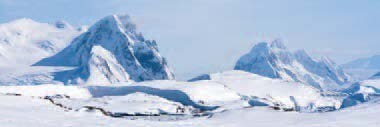Active Volcano Discovered Under Antarctic Ice

By Samba Lampich
For the first time, researchers have discovered an active volcano under half a mile of ice in the Antarctica. Active volcanoes above the ground on the continent are not new but this discovery confirms what scientist have long suspected; the vast West Antarctic Ice Sheets conceal volcanic activity beneath.
A Lucky Find
The discovery of the smoldering volcano in January 2010 was a lucky accident. A team of scientists lead by Doug Wiens, professor of earth and planetary science at Washington University in St. Louis, was conducting research to reveal the structure of the Earth’s mantle using seismographs with automated-event detection software. In January 2010 and March 2011, readings showed two unusual swarms of low magnitude earthquakes in the mountainous area of Marie Byrd Land in western Antarctica.
The scientists realized that the deep, long-period earthquakes were not caused by glacial movement or tectonic activity. After looking closer at the data, they realized were seismic events were happening 15 to 25 miles beneath the surface and it became obvious that there was a new volcano forming underneath their feet.
“My first thought was, ‘OK, maybe it’s just coincidence.’ But then I looked more closely and realized that the mountains were actually volcanoes and there was an age progression to the range. The volcanoes closest to the seismic events were the youngest ones,” said Amanda Lough, a PhD student in Wiens’ lab and the first author of the study.
Confirmation was made easier by topographic maps of the bedrock that were taken by a team of scientists flying an airborne radar over the region. The maps showed elevation in the bed topography in the same location the earthquakes happened. The radar images also showed a layer of ash buried under the ice.
Fire and Ice Eruption
The scientists believe that it would take an enormous eruption to breach the more than half-mile thick layer of ice. Such an eruption would have to release 1000 times more energy than a regular one. But even a small eruption would produce enough heat to melt the bottom of the ice sheet immediately above the vent and lubricate overlying ice making it flow out to sea faster. This flow of ice into the sea could raise global sea levels by a small amount.
Classroom Discussion
- What causes volcanic lightning?
- Where are most of the volcanoes in the world located?